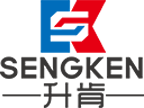
XIAMEN SENGKEN INDUSTRY&TRADE CO.,LTD.
3D Printing
We provide 3D printing services for the production of both prototypes and series of parts in as fast as 3 days.
We have the capability to produce parts by Selective Laser Sintering (SLS), HP Multi Jet Fusion (HP MJF), Fused Deposition Modeling (FDM), Stereolithography (SLA), Carbon DLS™, Direct Metal Laser Sintering and PolyJet.
-Multiple Processes:
SLS: Selective Laser Sintering
HP MJF: HP Multi Jet Fusion
FDM: Fused Deposition Modeling
SLA: Stereolithography
Carbon DLS™: Digital Light Synthesis
PolyJet: Rigid photopolymer technology
DMLS: Direct Metal Laser Sintering
-Online 3D printing service
-Over 70 materials to choose from
-Prototype & Serial Manufacturing
3D Printing Materials:
1.Rigid Plastics
8360X-SLA
9400E-SLA
Ledo6060-SLA
High toughness ABS-like - imported Somos-SLA
8100-SLA
Therm1-SLA
TAURUS-SLA
8220-SLA
Black resin -SLA
Nylon PA12-SLS
Nylon PA12 GF-SLS
Nylon PA11-SLS
PA6 GB-SLS
Nylon PA12-MJF
Nylon PA12 GB-MJF
Nylon PA11-MJF
ABS-FDM
ASA-FDM
PA12CF-FDM
PEEK-FDM
PLA-FDM
ULTEM1010-FDM
ULTEM9085-FDM
PC-FDM
2.Flexible Plastics
TPU 84A-SLS
TPU 88A-SLS
HP TPU-SLS
3.Rubber-Like Plastics
EPU 40
SIL 30
4.Silicone Rubbers
True Silicone
5.Photopolymers
Photopolymer, rigid
6.Aluminium
Aluminium Al-Si10Mg-SLM
7.Cobalt Chrome
Cobalt chrome / CoCr
8.Steel
Tool steel 1.2709 / MS1-SLM
9.Stainless Steel
Stainless Steel 17-4PH / 1.4542 / X5CrNiCuNb16-4-SLM
Stainless Steel 316L / 1.4404 / X2CrNiMo17-12-2-SLM
10.Inconel
Inconel 718
11.Titanium
Titan Grade 5 / 3.7164 / 3.7165 / Ti-6Al-4V
Finishing Options for 3D Printed Parts
1.Maintain the original shape after printing
2.Vapour Smoothing
3.Dyeing
4.Bead Blasting
5.Media tumbling
6.Quick clear
7.Spray painting
8.Custom
|
SLS |
HP MJF |
SLA |
FDM |
Carbon DLS |
DMLS |
Polyjet |
|
|
Lead time |
3 days |
3 days | 3 days | 3 days | 3 days | 3 days | 3 days |
|
Build volume |
up to 340 x 340 x 605 mm, but usually, we recommend the maximum size of 320 x 320 x 580 mm |
up to 380 x 284 x 380 mm, while we normally recommend the maximum size of 356 x 280 x 356 mm |
• 145 × 145 × 185 mm (Standard) |
• 350 x 350 x 350 mm (Standard) |
up to 119 x 189 x 300 mm. Recommended size: Within 100 x 100 x 150 mm |
400 x 400 x 400 mm |
up to 490 mm x 391 mm x 200 mm |
|
Layer thickness |
~0.1 mm and for water-tight parts 1.5 mm, when wall thickness is higher |
~0.08 mm |
min 0.02 |
~0.05-0.3 mm |
~0.1 mm |
0.02 – 0.08 mm depending on the material |
0.04 mm |
|
Minimum feature size |
0.5 mm |
0.5 mm |
0.2 mm |
up to 0.2 mm |
0.5 mm |
0.75 mm for cosmetic features, 1.5 mm for structural features |
1.2 mm or greater for rigid. 2 mm or greater for rubber-like |
|
Tolerance |
±0.3% (± 0.3 mm) |
±0.3% (± 0.2 mm) |
• ±0,5% (±0,2 mm) (Standard) |
±0,5% (±0,5 mm) (Standard & Industrial) |
±0.1% (±0.1 mm). However, tolerances are not guaranteed on the first attempt at a new design. |
±0.2% (±0.1 – 0.2 mm) |
±0.1 mm for the first dozens of mm is typical, plus ±0.05 mm for every mm thereafter |
|
Description |
One of the most popular and inexpensive technologies for industrial 3D printing |
A technology that produces highly accurate and durable parts at fast speeds, especially compared to other powder bed fusion technologies |
A technology that produces extremely accurate and high-resolution parts |
Widely known for a great material selection, accuracy, and possibility to print large parts |
A breakthrough technology that uses digital light projection, programmable liquid resins, and oxygen-permeable optics to produce parts with exceptional durability, resolution, and surface finish |
Metal 3D printing technology. Selectively fuses a fine metal powder in aluminium or stainless steel |
Polyjet is a rigid photopolymer 3D printing technology that produces high-detailed models |
|
Support Structures |
No |
No |
Yes, for overhanging features |
Yes, for overhanging features |
Yes, for overhanging features |
Yes, for overhanging features |
Yes, for overhanging features |